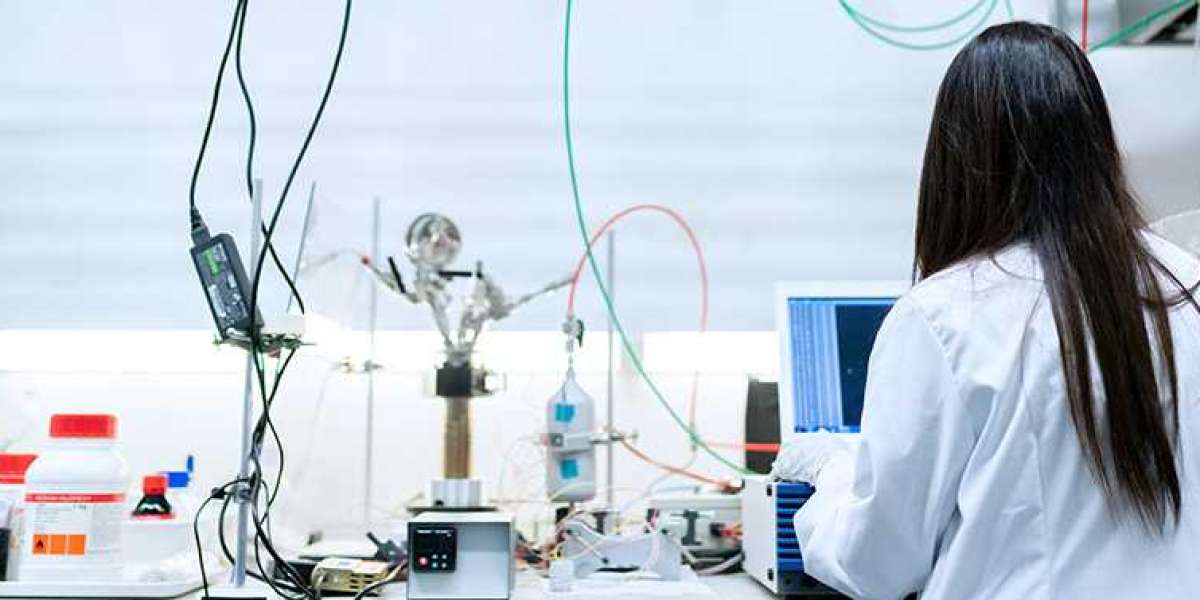What is Laboratory Equipment Calibration?
Defining Calibration
Calibration involves comparing the measurements of an instrument to a known standard. This process adjusts the equipment to ensure that it provides accurate readings within a specified range.
Why Calibration is Essential
Inaccurate readings can lead to incorrect data, which in turn can affect research outcomes, quality control processes, and even patient safety. Regular calibration minimizes these risks by ensuring that all measurements are as precise as possible.
Types of Laboratory Equipment That Require Calibration
1. Balances and Scales
Balances and scales are used to measure mass with high precision. Calibration ensures that these instruments provide accurate measurements, which is crucial for experiments that require exact quantities.
2. Thermometers and Temperature Sensors
Temperature control is critical in many laboratory processes. Calibrating thermometers and temperature sensors ensures that the readings are accurate, maintaining the integrity of temperature-sensitive experiments.
3. pH Meters
pH meters are used to measure the acidity or alkalinity of a solution. Calibration is necessary to ensure that the pH measurements are correct, especially in experiments where pH plays a critical role.
4. Spectrophotometers
Spectrophotometers measure the intensity of light. Regular calibration is essential to ensure accurate absorbance and transmittance readings, which are crucial for various analyses.
5. Pipettes and Dispensers
Pipettes and dispensers are used to measure and transfer precise volumes of liquid. Calibration ensures that the correct volume is delivered, which is vital for reproducible results.
The Calibration Process: What to Expect
1. Pre-Calibration Checks
Before calibration, the equipment undergoes a series of checks to ensure it’s functioning properly. This includes inspecting for physical damage and verifying that it is operating within its expected range.
2. Calibration Procedure
The actual calibration involves comparing the instrument's readings against a certified standard. Adjustments are made as necessary to bring the equipment into alignment with the standard.
3. Post-Calibration Verification
After calibration, the equipment is tested again to verify that it provides accurate readings. A calibration certificate is usually issued, detailing the results and confirming that the instrument is within acceptable limits.
4. Documentation and Record Keeping
Accurate documentation of the calibration process is essential. This includes maintaining records of the calibration results, certificates, and the dates when the next calibration is due.
Choosing a Calibration Service Provider
1. Accreditation and Certification
When selecting a calibration service provider, it’s important to choose one that is accredited by recognized bodies, such as ISO/IEC 17025. Accreditation ensures that the provider follows international standards and best practices.
2. Expertise and Experience
Choose a provider with extensive experience in calibrating the specific types of equipment you use. Experienced technicians are more likely to identify potential issues and perform accurate calibrations.
3. Turnaround Time
Consider the turnaround time offered by the provider. Quick and efficient calibration services minimize downtime, allowing your laboratory to maintain its workflow without significant interruptions.
4. On-Site vs. Off-Site Calibration
Some calibration services offer on-site calibration, where technicians come to your facility to perform the calibration. This can be more convenient and reduces the risk of damage during transportation.
The Importance of Regular Calibration
1. Ensuring Compliance with Regulations
Many industries are governed by strict regulatory standards that require regular calibration of equipment. Compliance ensures that your laboratory meets these standards, avoiding potential fines and legal issues.
2. Maintaining Data Integrity
Accurate data is the cornerstone of any scientific or industrial process. Regular calibration ensures that the data generated by your laboratory equipment is reliable and reproducible.
3. Extending Equipment Lifespan
Regular calibration can also extend the lifespan of your laboratory equipment. By identifying potential issues early, calibration can prevent costly repairs or the need for premature replacement.
4. Enhancing Safety
Inaccurate equipment can lead to unsafe conditions, particularly in laboratories that handle hazardous materials. Regular calibration ensures that equipment operates safely and within its specified limits.
Current Trends in Calibration Services
1. Digital Calibration Systems
Advancements in technology have led to the development of digital calibration systems that offer greater precision and ease of use. These systems often include software that automates parts of the calibration process, reducing human error.
2. Remote Calibration
Remote calibration services are becoming more popular, allowing technicians to calibrate equipment without needing to be physically present. This is particularly useful for laboratories in remote or hard-to-access locations.
3. Integration with Laboratory Information Management Systems (LIMS)
Many laboratories are now integrating calibration data with their Laboratory Information Management Systems (LIMS). This allows for easier tracking of calibration schedules and results, ensuring that no equipment is overlooked.
Best Practices for Laboratory Equipment Calibration
1. Establish a Calibration Schedule
Create a calibration schedule that aligns with manufacturer recommendations and regulatory requirements. Regular calibration helps maintain accuracy and compliance.
2. Train Staff on Calibration Procedures
Ensure that your staff is trained on the importance of calibration and how to properly maintain equipment. Proper use and care can reduce the frequency of calibration and extend the life of your instruments.
3. Keep Accurate Records
Maintain detailed records of all calibration activities, including the dates of calibration, results, and any adjustments made. This documentation is crucial for audits and quality control.
4. Regularly Review and Update Calibration Procedures
As technology and standards evolve, so too should your calibration procedures. Regularly review and update your procedures to ensure they meet current industry standards.
Conclusion
Laboratory equipment calibration is a fundamental aspect of maintaining accuracy, reliability, and safety in any laboratory environment. By choosing the right service provider, adhering to a regular calibration schedule, and staying informed about the latest trends and best practices, you can ensure that your laboratory equipment continues to deliver precise and dependable results.
FAQs
1. How often should laboratory equipment be calibrated?
The frequency of calibration depends on the type of equipment, usage, and industry regulations. Generally, equipment should be calibrated at least once a year.
2. What happens if I skip regular calibration?
Skipping calibration can lead to inaccurate results, non-compliance with regulations, and potentially unsafe conditions in the laboratory.
3. Can I perform calibration myself?
While some basic calibrations can be done in-house, it’s recommended to use accredited calibration services for precise and reliable results.
4. What should I look for in a calibration certificate?
A calibration certificate should include the date of calibration, the results, the standards used, and the next calibration due date. It should also be signed by a qualified technician.
5. Is on-site calibration as accurate as off-site calibration?
On-site calibration can be just as accurate as off-site calibration, provided that the service provider uses the correct equipment and follows standardized procedures.








